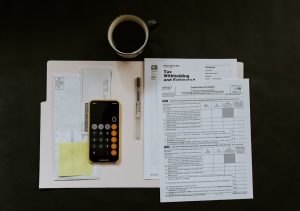Understanding Leverage in Forex Trading: An Example-Based Guide
When it comes to forex trading, one of the most important concepts to grasp is leverage. Leverage allows traders to amplify their exposure to the market by borrowing money from their broker. This can be a powerful tool, but it also comes with significant risks. In this guide, we will explore the concept of leverage in forex trading, its benefits and drawbacks, and provide real-life examples to help you understand how it works.
What is Leverage?
Leverage in forex trading is a mechanism that enables traders to control larger positions in the market with a smaller amount of capital. It is expressed as a ratio, such as 1:50 or 1:200, indicating how much capital a trader can control compared to the amount deposited in their trading account.
For example, with a leverage ratio of 1:100, a trader can control a position worth $100,000 with only $1,000 in their account. This means the trader’s capital is multiplied by 100, giving them the ability to potentially generate higher profits. However, it also means that losses can be magnified, leading to higher risk exposure.
Benefits of Leverage:
1. Increased Profit Potential: Leverage allows traders to maximize their profit potential by controlling larger positions in the market. With a smaller initial investment, traders can participate in larger trades and potentially generate higher returns.
2. Diversification: Leverage enables traders to diversify their portfolio by accessing multiple currency pairs and markets simultaneously. This can help spread risk and increase the opportunity for profit.
3. Lower Capital Requirements: Leverage reduces the amount of capital required to enter the forex market. This makes trading more accessible to individuals with limited funds, allowing them to participate in the market and potentially generate profits.
Drawbacks of Leverage:
1. Increased Risk: The higher the leverage, the greater the risk. While leverage can amplify profits, it can also magnify losses. Traders must be cautious and manage their risk effectively to avoid significant losses.
2. Margin Calls: When trading with leverage, traders must maintain a certain amount of capital in their account known as the “margin.” If the account balance falls below this threshold, the broker may issue a margin call, requiring the trader to deposit additional funds or close positions to meet the margin requirements.
3. Emotional Pressure: Trading with leverage can induce emotional pressure, especially when losses are magnified. Traders may be tempted to take impulsive actions or deviate from their trading plan, leading to poor decision-making and further losses.
Example 1: Understanding Leverage in Practice
Let’s say you have $1,000 in your trading account, and your broker offers a leverage ratio of 1:100. With this leverage, you can control a position worth $100,000 in the forex market.
Suppose you believe that the euro (EUR) will appreciate against the US dollar (USD). You decide to open a long position on the EUR/USD currency pair at 1.2000, with a lot size of 0.1 (equivalent to $10,000).
Without leverage, your position would require $10,000 in capital. However, with 1:100 leverage, you only need $100 ($10,000 divided by the leverage ratio) as margin to control this position.
If the EUR/USD exchange rate increases to 1.2100, your position would generate a profit of 100 pips or $100 (0.1 lot size x 100 pips x $10 per pip). This represents a 100% return on your initial investment of $100.
Example 2: The Risks of Leverage
Now, let’s consider the risks associated with leverage. Suppose the EUR/USD exchange rate moves against your position and decreases to 1.1900. This would result in a loss of 100 pips or $100.
In this scenario, your entire initial investment of $100 would be wiped out. However, it’s important to note that losses can exceed the initial investment. If the market moves further against your position and the loss exceeds your available margin, you may receive a margin call, requiring additional funds or position liquidation.
Conclusion:
Leverage can be a valuable tool in forex trading, allowing traders to control larger positions and potentially generate higher profits with a smaller capital investment. However, it also comes with significant risks that must be managed effectively.
Understanding leverage ratios, margin requirements, and the potential for losses is essential for any forex trader. It is crucial to develop a solid risk management strategy, set appropriate stop-loss orders, and avoid overleveraging to ensure long-term success in forex trading.
Remember, leverage is a double-edged sword – it can amplify both profits and losses. Therefore, it is essential to educate yourself, seek professional guidance, and practice with demo accounts before trading with real money.




